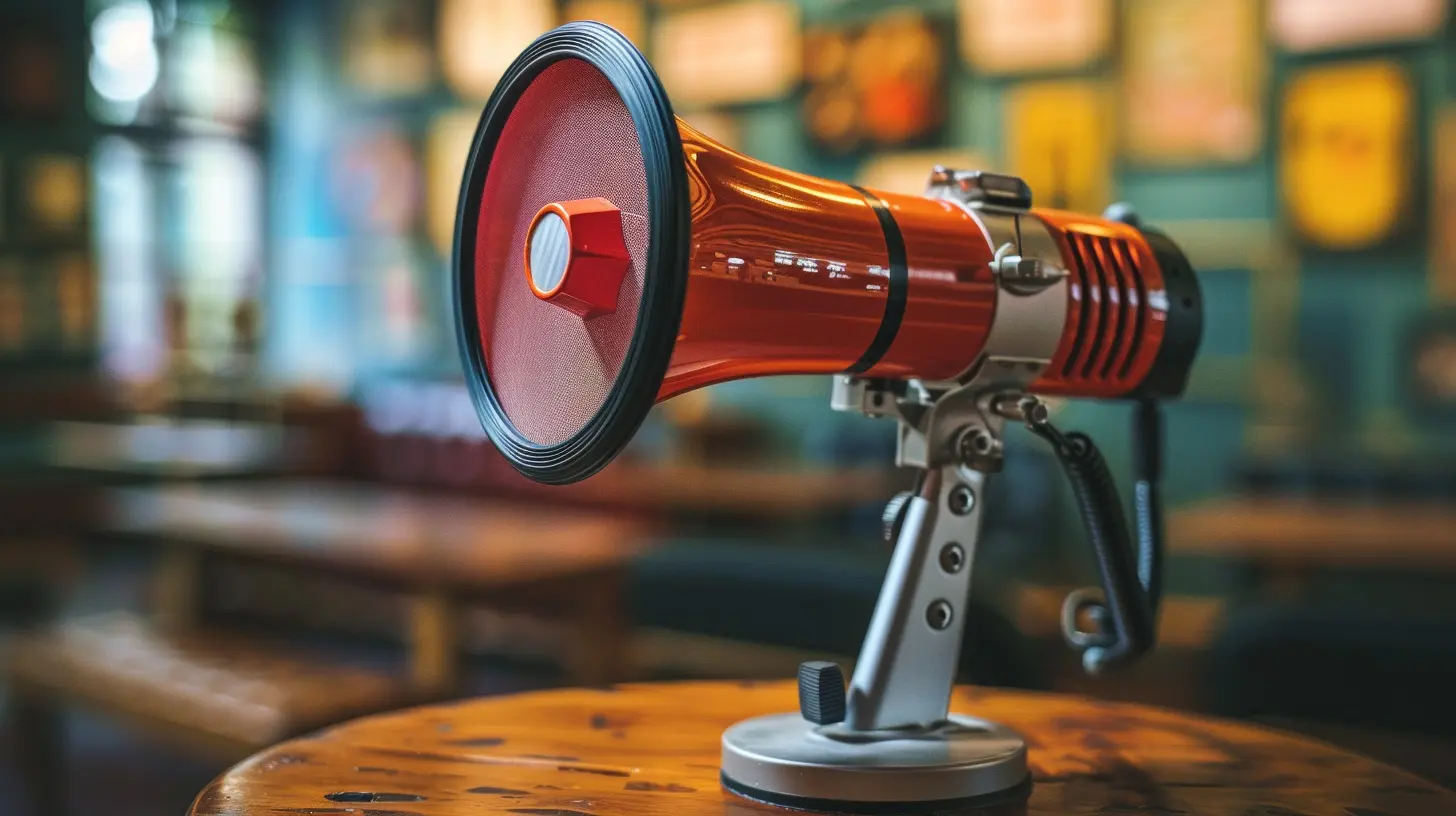Creating a PR Plan Around Product Launches
13 June 2025
Launching a new product is like throwing a party—you want people to show up, have a great time, and talk about it afterward. But just like planning a killer party, a successful product launch doesn’t happen by chance. It takes strategy, timing, and a solid public relations (PR) plan to make it unforgettable.
In this article, we’re going to walk through exactly how to create a PR plan around product launches. Whether you're launching your very first product or you're a seasoned brand looking to spice things up, this guide will help you craft a plan that gets your product the attention it deserves.
Why You Need a PR Plan for a Product Launch
Let’s start with the obvious—why even bother with a PR plan? Can’t you just post about your new product on social media and call it a day?Well, not quite.
A PR plan is like the GPS for your product launch. Without it, you might eventually reach your destination, but you’ll waste time, money, and miss out on some pretty great shortcuts along the way.
Here's what a PR plan does for you:
- Builds momentum before launch day
- Creates buzz and excitement
- Gets media coverage
- Helps control the message
- Reaches new audiences quickly
- Boosts credibility and authority
In short, it helps your product make a splash instead of a ripple.
Step 1: Define Your Goals
Before we start shouting from the rooftops, let’s figure out what we’re actually trying to achieve.Your goals should be clear, specific, and measurable. Some examples might include:
- Generate X number of media mentions within launch week
- Drive X% increase in website traffic
- Grow email list by X subscribers before launch
- Secure X number of product reviews from influencers
Write down your goals and use them as your North Star. Every decision you make from here on should align with these objectives.
Step 2: Know Your Audience Inside and Out
You wouldn’t throw a party without knowing who’s coming, right? Same logic applies here.Take the time to define your ideal customer. Who are they? What do they care about? What problems is your product solving for them?
Create a customer persona if you haven’t already. And don’t just stop at demographics—dig into their behavior, preferences, and pain points.
Understanding your audience will help you craft the right messages, choose the right media outlets, and speak their language in a way that resonates.
Step 3: Craft Your Core Messaging
Now that you know who you're talking to, it’s time to figure out what you're going to say.Your messaging should answer three key questions:
- What is the product?
- Why does it matter?
- Why should anyone care?
Keep it simple and relatable. Avoid jargon and get straight to the point. People don’t want to read a novel—they want to know how your product will make their life better, easier, or more fun.
You’ll use this messaging in press releases, social posts, pitch emails, and everywhere else, so take your time to get it right.
Step 4: Build a Timeline and Launch Calendar
You wouldn’t launch a rocket without a countdown, so don’t launch a product without a plan.Break your launch down into phases:
Pre-Launch
- Tease the product on social media- Start warming up your email list
- Reach out to media and influencers
- Finalize all content and marketing materials
Launch Day
- Publish press release- Announce on all channels
- Launch email blast
- Schedule interviews and demos
Post-Launch
- Continue media outreach- Share customer reviews and testimonials
- Monitor media coverage and social chatter
- Re-engage audience with tutorials, case studies, and more
Having a detailed calendar keeps everyone on the same page and ensures nothing slips through the cracks.
Step 5: Create Killer Content
Content is your greatest weapon in a PR launch. And we’re not just talking about blog posts (though those are great too).Think about:
- Press releases
- Product photos and videos
- Behind-the-scenes sneak peeks
- Interviews with founders or product developers
- Blog articles highlighting product benefits
- Email newsletters
- Social media countdowns and teasers
You want a mix of formats and platforms here. The more angles you cover, the more chances you have to capture your audience’s attention.
Pro Tip: Create a media kit. Include product info, photos, bios, press releases, and contact details. Make it easy for journalists and influencers to talk about you.
Step 6: Pitch the Media Like a Pro
A solid press release is crucial, but it’s not enough on its own. You need to get it into the right hands.Make a list of media outlets, blogs, and journalists who cover your industry or similar products. Personalize every pitch—nobody likes a copy-paste email.
Mention why the product is relevant to them and their audience. Offer an exclusive interview, an early look, or a review opportunity. Editors and writers get hundreds of emails a day, so make yours stand out with a compelling subject line and a quick, benefit-driven pitch.
Don’t forget to follow up—but do it politely. People are busy.
Step 7: Get Influencers and Brand Ambassadors Involved
Influencer partnerships are gold during product launches.Reach out to people who already engage with your brand or align with your values. You don’t need mega-celebrities—a few micro-influencers with loyal followings can make a huge impact.
Send them a sample of the product early. Encourage them to share their honest feedback and experiences. Authenticity wins here.
Bonus: Ask for user-generated content and re-share it. It adds social proof and builds trust like nothing else.
Step 8: Leverage Social Media (Hard)
Social media is your fast track to buzz. Use it to build excitement leading up to your launch and keep the momentum going afterward.Here are a few ideas:
- Countdown posts and stories
- Polls and Q&A sessions
- Teasers and sneak peeks
- Giveaways or contests
- Behind-the-scenes footage
- Go live on launch day
Pick platforms where your audience actually hangs out and focus your efforts there. TikTok might be huge, but if your customers are on LinkedIn or Pinterest, go there.
And don’t forget hashtags—they’re your discovery engine.
Step 9: Monitor, Measure, and Adjust
You’ve launched. Congrats! But your job isn’t over yet.Now it’s time to track what’s working and what’s not. Use analytics tools to monitor:
- Website traffic
- Media pickups and mentions
- Social media reach and engagement
- Email open and click rates
- Sales and conversions
Look at both qualitative and quantitative data. What are people saying? Are they excited? Confused? Asking questions?
Use this feedback to optimize your messaging and content going forward. Maybe your next campaign needs more video, or maybe people responded better to your “how-to” posts than your product features.
Adjust, test, and improve.
Common Mistakes to Avoid
A great PR plan can create magic—but a few wrong moves can make it fall flat. Here are some pitfalls to watch out for:- Launching without a strategy – Don’t just wing it.
- Overselling the product – Be honest, not hype-y.
- Ignoring your audience – Speak their language.
- Skipping follow-up – Journalists and influencers need reminders.
- Forgetting post-launch efforts – Launch day is just the beginning.
Stay grounded, stay genuine, and don’t treat your PR like it’s a one-and-done operation.
Wrapping It Up
Creating a PR plan around product launches isn’t just about shouting the loudest. It’s about telling a great story, connecting with the right people, and showing the world why your product matters.Think of it as building a bridge between your amazing product and the people who need it most. PR is the vehicle that drives across that bridge.
So start early, plan smart, and don’t be afraid to get creative. Your launch deserves to be heard, shared, and celebrated.
Now go make some noise
all images in this post were generated using AI tools
Category:
Public RelationsAuthor:

Amara Acevedo
Discussion
rate this article
2 comments
Ardyn Becker
Strategic PR amplifies product launches for maximum impact.
June 20, 2025 at 3:12 AM

Amara Acevedo
Absolutely! Strategic PR is essential for product launches, as it enhances visibility and engages target audiences effectively, driving maximum impact.
Runehart McGovern
Great insights on crafting an effective PR plan for product launches! It's so true that a well-thought-out strategy can make all the difference. I love how you highlighted the importance of storytelling and audience engagement—definitely key elements for a successful launch. Thanks for sharing!
June 16, 2025 at 4:19 AM

Amara Acevedo
Thank you for your kind words! I'm glad you found the insights valuable and agree on the importance of storytelling and audience engagement. Happy launching!


